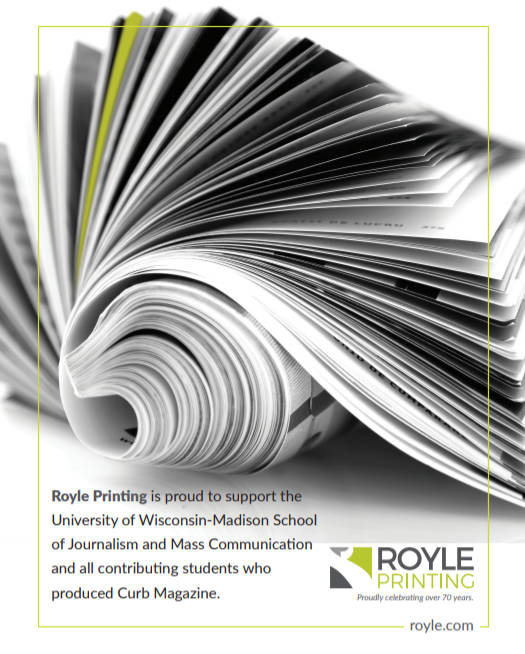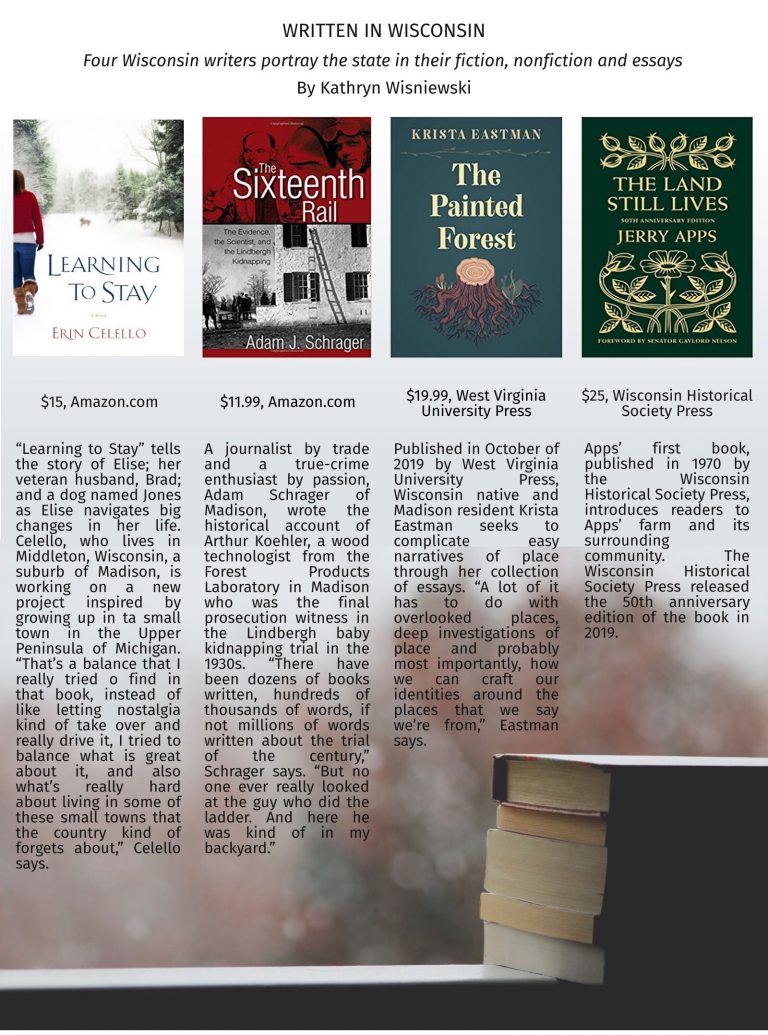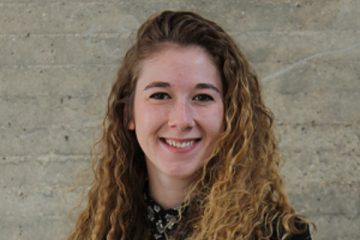Write at Home

WRITE AT HOME
Photo courtesy of Jerry Apps
Exploring Wisconsin identities through storytelling
Driving down the Wisconsin interstate, tableaus zip past — rustic red barns, dairy cows peppering a green field, or rural towns buried in deep snow. But the Wisconsin narrative is more than its images; it is its people and its words.
“We can’t know where we’re going unless we know where we’ve been,” author Jerry Apps says. “Where we’ve been subtly, sometimes very subtly, sometimes unknowingly, influences what we do, how we do it, what we believe, what we value, how we see the world, how we see others,” he continues.
“All those things, I firmly believe, are influenced by where we have been, and what our early education was — both that which was formal in the schools, and, probably more important, that which took place in our families in our communities — and the kind of life that we’re living,” Apps says.
Four Wisconsin writers are portraying what it means to be a Wisconsinite in their fiction, literary nonfiction and historical accounts.
Let me show you
Jerry Apps, 85, lives in Madison.
“People think I’m crazy, but I try to write every day,” Apps says.
Since 1970, he has published more than 30 nonfiction books, seven novels, one young adult novel and two children’s books. He also published several professional books during his more than three-decade career as a professor at UW-Madison.
Apps, who now writes for four hours a day, began his writing career when he was in eighth grade after coming down with polio. With his right leg paralyzed, he was no longer able to play sports and took up typewriting at school. His high school typewriting course led him to the school newspaper, The Rose Bud, named after his hometown of Wild Rose, in central Wisconsin.
Apps’ newspaper career proliferated after he graduated high school and went on to college. He wrote columns for newspapers all over the state but had a desire to write something connected to his background growing up on his family farm.
“Maybe there was a place for me, with my interest in writing, to share some of that with other people who may not have been aware of what it was like growing up on a farm through the Depression and during World War II,” he says.
In 1970, Apps published “The Land Still Lives” with the Wisconsin Historical Society Press. The press recently released the book’s 50th anniversary edition.
What unites Apps’ fiction and nonfiction are his depictions of rural Wisconsin.
“For each of my novels,” Apps says, “I select an issue that is troubling rural America today: food safety, land-use planning, water pollution, soil conservation. Each of those are a theme, an issue that I develop through character and story.” Apps says he hopes his novels are “a quiet and subtle way of helping people understand better now an issue from a variety of perspectives as told through a story rather than through a nonfiction.”
While Apps’ nonfiction tends to highlight topics in Wisconsin rather than themes, he emphasizes the power and importance of story across his writing.
“The extent to which we can look at a situation as a story helps us see that situation in considerably more depth than simply the facts of the matter. The facts are important, but the emotions are also important,” Apps says.
Ties
Krista Eastman, 39, lives in Madison.

Essayist Krista Eastman questions identity and our understanding of place in her work. (Photo courtesy of Krista Eastman)
“A lot of it has to do with overlooked places, deep investigations of place and, probably most importantly, how we can craft our own identities around the places that we say we’re from,” Eastman says of her recently released collection of essays.
The collection, titled “The Painted Forest,” was published by West Virginia University Press. While the collected essays speak on different topics, Eastman says they all share the same question: How do people form their identities around the places they live?
“The Painted Forest” was informed by Eastman’s experience living outside of Wisconsin. A Wisconsin native, Eastman found that many people across the country and the globe have no idea where Wisconsin is.
“When I was not living in Wisconsin, I was often operating as an unpaid ambassador, or I was like, ‘Look, this place is not two-dimensional. People are not types.’ And I was always trying to complicate people’s understanding of this place,” Eastman says.
Eastman’s writing works to tease out the complications of representing a multidimensional place.
“As soon as you start trying to lay out and define what a place is, you come up against contradictions. But then, on the other hand, if you don’t make some of those efforts to talk really specifically about your home as you know it, and you live somewhere like Wisconsin, then what ends up happening is that the only ideas or representations that people have are these crazy caricatures or punch lines,” she says.
The theme of representing an often-misrepresented place is one reason Eastman thinks the collection was published by West Virginia University Press. The press seeks to offer complicated narratives about Appalachia, another dynamic place that Eastman says is “misrepresented in mainstream media and in the public imagination,” an idea which resonates within her collection of essays.
Eastman says she hopes her work complicates easy narratives of place and points to the notion that “serious efforts and art can come from anywhere.”
Somewhere in the middle of nowhere
Erin Celello, 43, lives in Middleton, Wisconsin, a suburb of Madison.
“I’ve lived in D.C., I’ve lived in New Jersey. I felt way more anonymous there. There’s just no sense of real community that we have here in the Midwest. And so I see that showing up a lot in writers around here,” Celello says.
Celello is the author of the novels “Miracle Beach” and “Learning to Stay.” She received her Master of Fine Arts in fiction from Northern Michigan University, where she drafted early versions of her first published book, “Miracle Beach.”

Author Erin Celello channels nostalgia in her novels. (Photo courtesy of Erin Celello)
Her latest project is based on her hometown in the UP, also known as the Upper Peninsula of Michigan, in a remote, rural area. She says that the book is not a personal memoir, but it does bring in ties from her own upbringing.
“I took my town and a lot of the other towns in the UP and sort of amalgamated them, and I’m looking at what the media glosses over when they talk about rural America,” Celello says.
She says she wants to present a side of rural America that she’s personally experienced. The idea of the book originated from a conversation she had with her aunt. When visiting her hometown one week and reflecting on her desire to move back there, her aunt reminded her that the Friday night they were sharing was not what the town was like all the time.
Celello’s book aims to add nuance to the idea that small towns are places we should escape and present the richness that exists in the people who choose to stay in such places.
“This book was my way into paying a little bit of homage to this place that I really love,” Celello says.
Still, presenting life in a small, rural town is a fine line to walk.
“That’s a balance that I really tried to find in that book. Instead of letting nostalgia kind of take over and really drive it, I tried to balance what is great about it and also what’s really hard about living in some of these small towns that the country kind of forgets about,” Celello says.
Forgotten by history
Adam Schrager, 50, lives in Madison.
“KAY-ler,” Schrager says. “He’s so forgotten that when they made the movie recently on J. Edgar Hoover, they pronounced his name wrong in the movie. That’s how forgotten he was.”
Schrager is the author of “The Sixteenth Rail,” a historical account of Arthur Koehler — pronounced KAY-ler. Koehler was a Wisconsin wood technologist, or xylotomist, who was the final prosecution witness in the Lindbergh baby kidnapping trial in the 1930s. He was called the Sherlock Holmes of his era by the New York Times.

Adam Schrager uses his historical writing to explore our roots and legacy. (Photo courtesy of Adam Schrager)
“There was no one more important than Charles Lindbergh and nothing more important than the trial of the man who was accused to have killed his son,” Schrager says. “And when you’re the final prosecution witness in the trial of the century, that’s a pretty cool story. And you’re, like, ‘Why has no one ever told it before?’ … And then my wife or somebody close to me would be like, ‘Well, why don’t you do it?’ And so then, I do it.”
Schrager defines himself as a storyteller, with his narrative nonfiction centering around historical accounts such as Koehler’s.
“My goal is I want people to be able to be immersed in the story, feel like it’s clean, that it moves and that it’s compelling,” Schrager says. “And the characters are vibrant and real. And the dialogue is authentic, and everything about the reporting, and the telling of it, is transparent. And at the end, if somebody says that was a really good story, that would be what would really appeal to me.”
Schrager came upon the story of Koehler when he heard that the ladder central to the Lindbergh baby kidnapping case was housed at the Forest Products Laboratory in Madison — though it turned out to be a replica. Schrager went on to discover that Koehler had lived mere blocks from his own home.
“There have been dozens of books written, hundreds of thousands of words, if not millions of words written about the trial of the century,” Schrager says. “But no one ever really looked at the guy who did the ladder. And here he was — kind of in my backyard.”
One of Schrager’s major sources of information in writing “The Sixteenth Rail,” which refers to the rail of the ladder used to kidnap the baby that became crucial evidence in the case, was George Koehler, Arthur’s son.
Not only did Schrager consult documents from the Forest Products Laboratory and the New Jersey State Police Museum in Trenton, New Jersey, George Koehler provided access to his father’s diary and letters from the time of the investigation and the trial.
“If you’re writing, you have to create that place, you have to create that scene,” Schrager says. “So how did you do it? If you weren’t there, you got to go find people who were. And you have to find things that somehow represent what was going on at the time. But that’s all research-based, you know, both kind of periodical, literary and interpersonal.”
As much as story is at stake when representing the past, nonfiction presents another challenge of representation.
“I think oftentimes, when you’re writing about nonfiction, it’s easy to forget that and not understand that there are few things more important and more impactful than reputation,” Schrager says. “As a journalist, too, I would say that it’s understanding your place and your role. And it’s easy to drop in and leave. It’s hard to come and stay.”
We are here
“Where we have been has so much to do with who we are,” Apps says.
Whether it’s the annual occurrence of winter, which teaches us to prepare for what’s coming, or the diversity of the 50 ethnic groups that had settled in the state by 1900, Apps believes Wisconsin has shaped its people in a unique way.
Celello, too, sees her work fitting into the narrative of Midwestern writers, saying the writers she knows all put a different spin on their Midwesterness. “The place that you come from is going to influence you in one way or another,” she says. “It might not be in super obvious ways, but it’s going to work its way in eventually.”
Similar to how Eastman diligently investigates the line of representing a place, Schrager believes storytellers have a responsibility to be mindful of the consequences of writing about real people.
“When they’re mindful of it, they’ll treat it respectfully,” he says. “And that should be the goal of every storyteller — every writer — to be true to your subject, and be true to your tale, true to your place, true to your time.”
Learn more about the authors' work

Deborah Blum
Hear from an author
Author Deborah Blum discusses her writing, including Poison Squad, UW-Madison’s 2019 Go Big Read book.

Kathryn Wisniewski | Copy Editor
Graduate student getting a M.A. in journalism